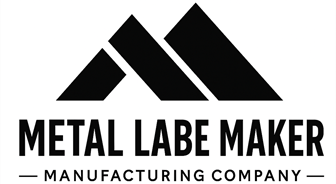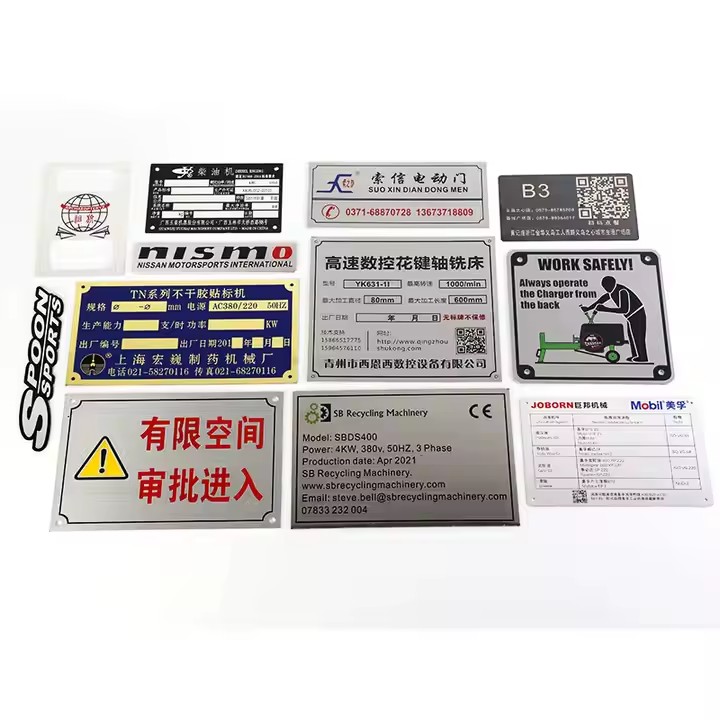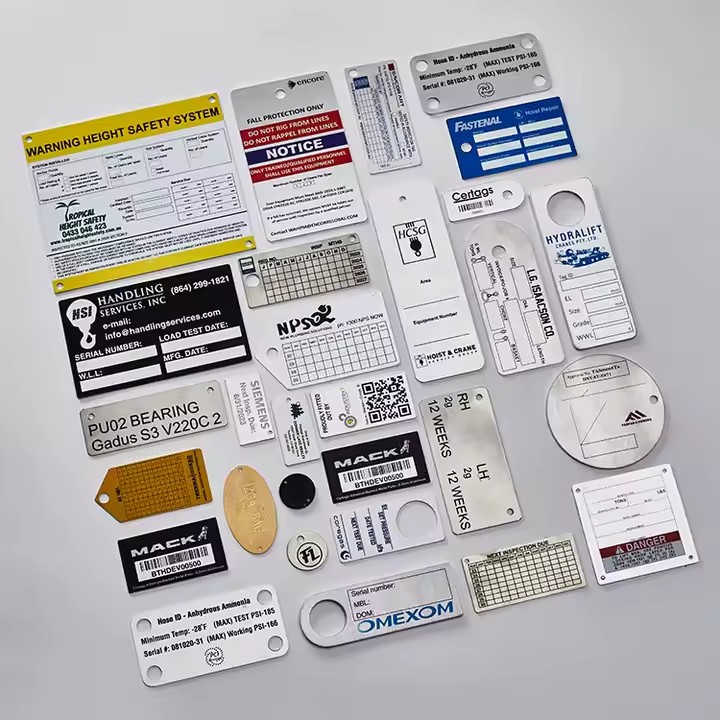Surface Finishing Techniques for Metal Labels: Sandblasting, Plating, Brushing & More
When it comes to custom metal labels, surface finishing is just as important as the material and printing method. A high-quality finish not only enhances appearance and texture, but also improves durability, corrosion resistance, and usability.
In this article, we’ll break down the most common metal label surface finishing techniques—including sandblasting, electroplating, brushing, and others—to help you understand which option is best for your project.
1. Sandblasting
What It Is:
Sandblasting (also known as abrasive blasting) involves spraying fine particles—such as sand or glass beads—onto the metal surface at high speed to create a matte, textured finish.
Key Features:
-
Removes surface imperfections
-
Creates a non-reflective, roughened texture
-
Ideal base for further coating or printing
-
Enhances grip and tactile quality
Best For:
Industrial, rugged-style labels or background textures before printing or anodizing.
2. Brushing
What It Is:
Brushed finishes are created by using abrasive belts or pads to create fine, uniform linear scratches on the metal surface.
Key Features:
-
Sleek, modern look
-
Satin or matte finish
-
Hides fingerprints and minor wear
-
Often used with stainless steel and aluminum
Best For:
Modern branding, control panels, product nameplates.
3. Electroplating (Plating)
What It Is:
Electroplating involves coating a metal label with a thin layer of another metal (e.g., nickel, gold, chrome) using an electrochemical process.
Key Features:
-
Enhances corrosion resistance
-
Improves surface hardness
-
Offers decorative metallic finishes (gold, silver, black chrome, etc.)
-
Can improve conductivity for technical applications
Best For:
Luxury labels, electronic tags, jewelry branding, decorative plates.
4. Anodizing
What It Is:
Anodizing is an electrochemical process that thickens the natural oxide layer on aluminum surfaces.
Key Features:
-
Available in many colors (silver, black, red, blue, etc.)
-
Adds corrosion and UV resistance
-
Non-conductive
-
Improves dye or ink adhesion
Best For:
Outdoor labels, colored branding tags, electronics, aircraft components.
5. Polishing
What It Is:
Polishing uses fine abrasives or buffing compounds to create a shiny, mirror-like surface.
Key Features:
-
Highly reflective finish
-
Premium or high-end appearance
-
Can be followed by protective coatings
-
More prone to fingerprints and scratches
Best For:
Luxury tags, decorative plates, branding for high-end products.
6. Powder Coating (Optional Color Finish)
What It Is:
Powder coating involves spraying electrostatically charged powder onto the surface, then baking it to form a smooth, durable finish.
Key Features:
-
Thick, even coating
-
Weather and chemical resistance
-
Available in many colors and textures
-
Eco-friendly (no solvents)
Best For:
Outdoor signage, color-coded labels, industrial applications.
7. Clear Coating or Lacquering
What It Is:
A transparent protective coating applied over the metal surface to seal and protect the finish.
Key Features:
-
Guards against oxidation and scratching
-
Can enhance gloss or preserve brushed/polished finishes
-
Available in gloss, satin, or matte levels
Best For:
Indoor/outdoor tags, polished labels, plated surfaces.
Comparison Chart: Metal Label Surface Finishes
| Finish Type | Appearance | Durability | Best Use Case |
|---|---|---|---|
| Sandblasting | Matte, rough texture | High | Industrial, pre-treatment |
| Brushing | Satin, linear texture | Medium | Modern branding, panels |
| Plating | Glossy metallic | High | Decorative, electrical, luxury tags |
| Anodizing | Colored, matte/satin | High | Outdoor use, color-coded tags |
| Polishing | Mirror-like shine | Medium | Premium branding |
| Powder Coating | Opaque, thick color | Very High | Weather-resistant, industrial use |
| Clear Coating | Transparent gloss/matte | Medium | Finish protection, indoor/outdoor use |
How to Choose the Right Surface Finish
Ask yourself the following:
-
Where will the label be used? (Indoor vs. outdoor, industrial vs. luxury)
-
What appearance do you want? (Matte, shiny, metallic, colorful?)
-
What kind of wear will it face? (Friction, UV, moisture?)
-
Is color matching or branding important?
💡 Combining finishes is also possible. For example: Brushed + Anodized or Etched + Powder Coated.
Conclusion
The surface finish of a metal label is more than just an aesthetic choice—it’s a key factor in performance, durability, and usability. By selecting the right surface treatment, you can ensure your custom metal labels are not only beautiful but also built to last.
💬 Need help choosing the right finish? Our team can recommend the best combination based on your material, environment, and design goals. Contact us today for free consultation and samples!







